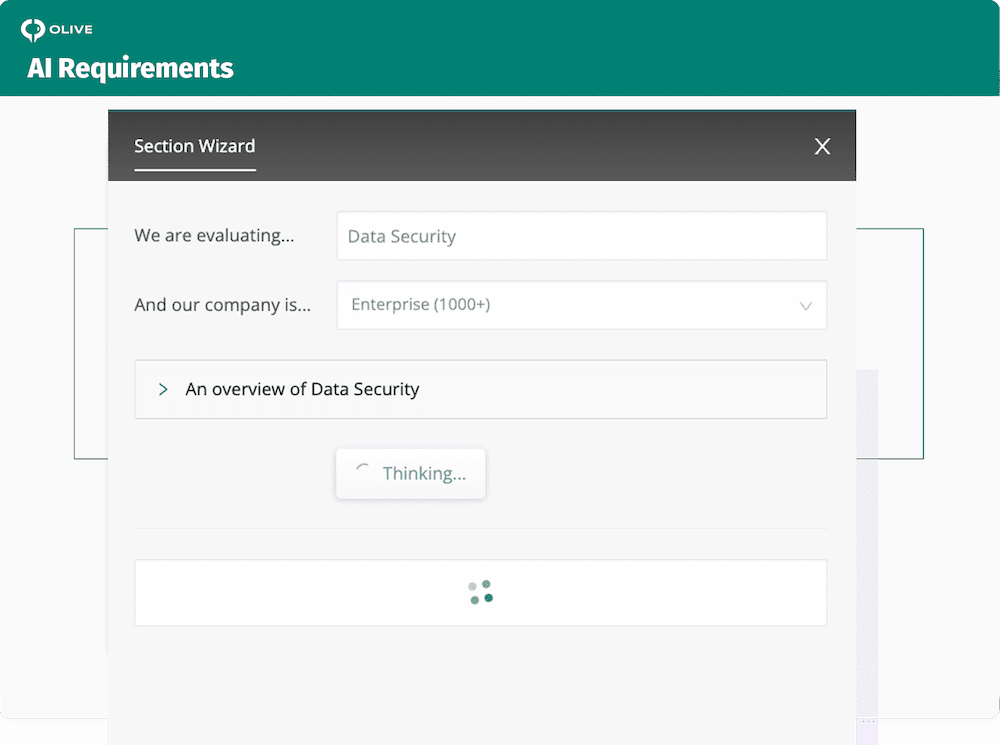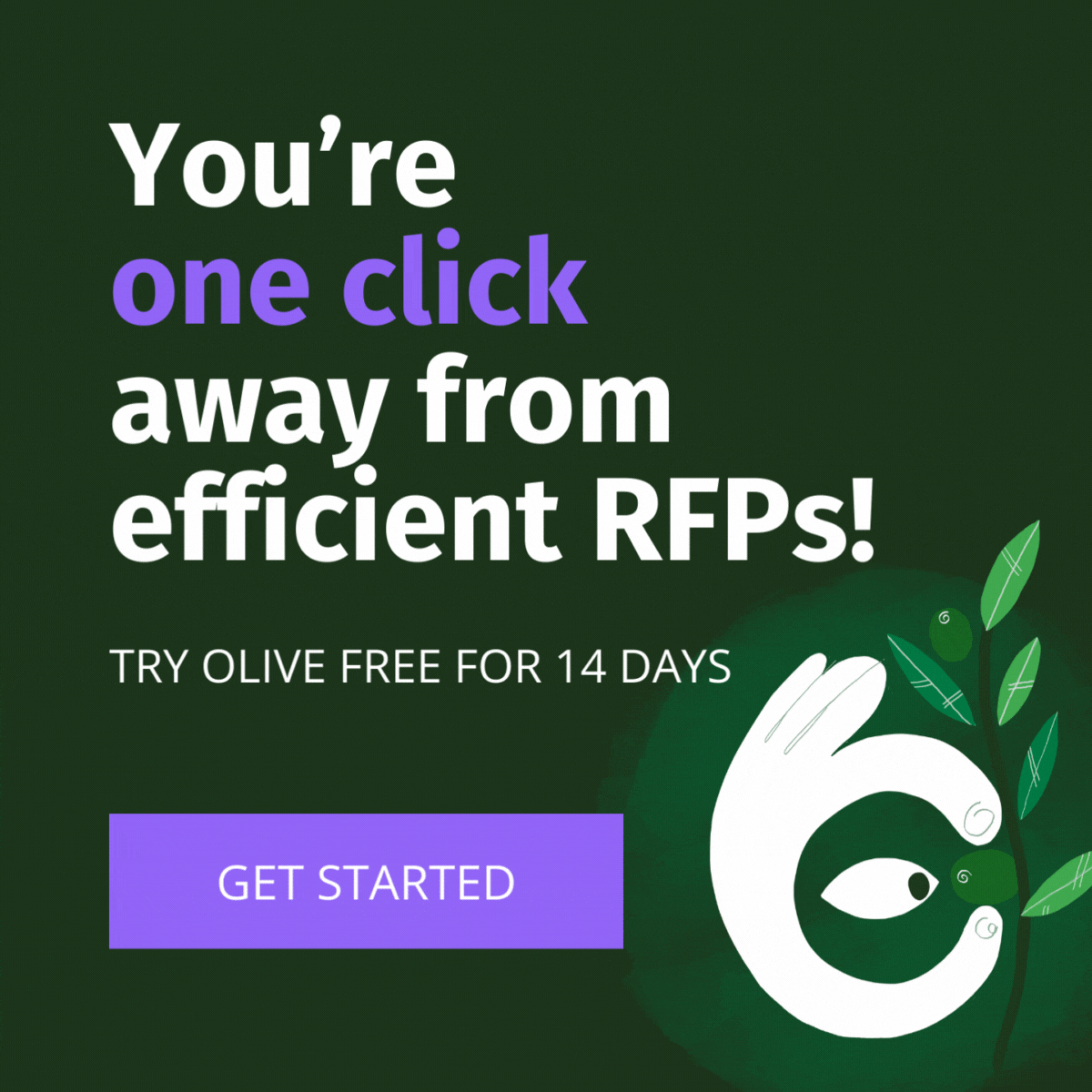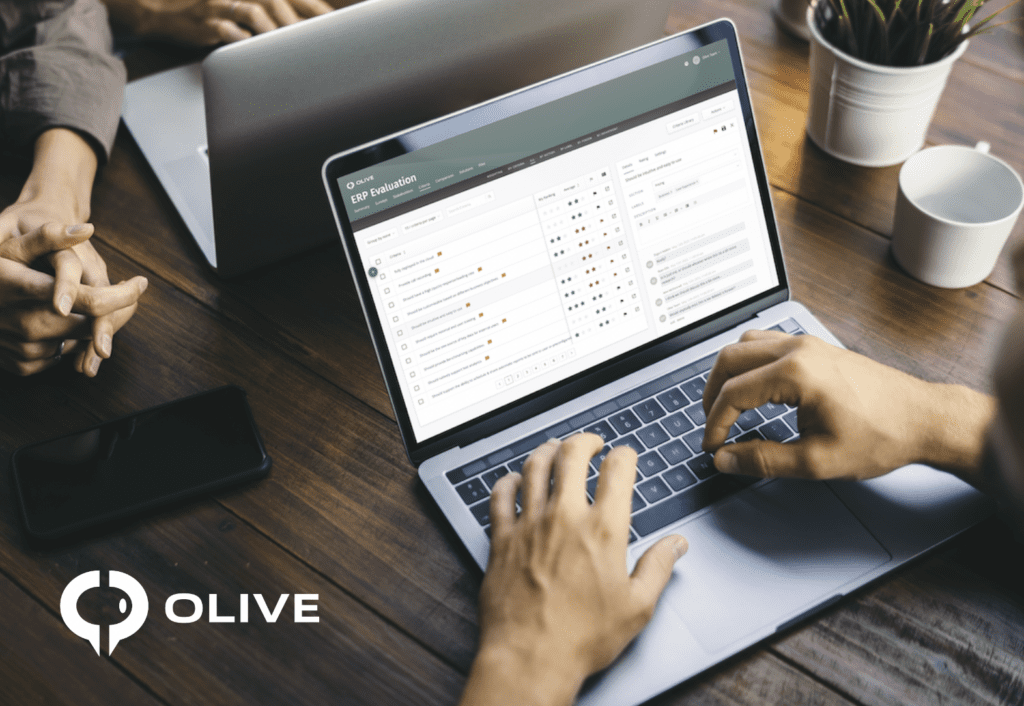Human-AI Collaboration: Streamlining Software Vendor Selection
You’ve spent months evaluating vendors, only to get to implementation and something goes south. Users don’t adopt it, the vendors have over-promised and under-delivered, or a crucial stakeholder was missed during the software selection process.
You’re not alone! At Olive, we constantly hear the same story about the painful software vendor selection process. Many PMs, CIOs and consultants tell us that they all follow the same rigid and dated waterfall process; going to the big analyst sites, picking the top few solutions, then shoe-horning the one that seems to be the best fit.
Vendor Selection can be a daunting and often frustrating experience, with many organizations facing challenges such as poor user adoption, unmet expectations, and missed stakeholder requirements. At Olive, we understand these pain points, which is why we advocate for a different approach. Our philosophy is simple: lead with the business needs first, and leverage the power of AI to streamline the process.
In the realm of software vendor selection, it is crucial to adopt an effective approach that prioritizes business needs. To shed light on this topic, let’s explore key aspects such as the best method for vendor selection.
What is software vendor selection?
Software vendor selection is the process of identifying and choosing the most suitable vendor or software solution to meet an organization’s specific business needs. It involves evaluating and comparing various vendors based on factors such as functionality, cost, security, integration capabilities, and alignment with the organization’s overall goals.
Software vendor selection refers to the challenges organizations face during the traditional waterfall process of evaluating vendors,
What is the best method for selecting vendors?
The best method for selecting vendors is to lead with the organization’s business needs and leverage the power of AI-driven technology. Instead of following rigid and dated waterfall processes, organizations can adopt a more dynamic approach that involves analyzing vast amounts of data and user feedback through AI algorithms. By prioritizing the alignment of vendor solutions with the organization’s specific requirements and goals, the selection process becomes more efficient, accurate, and future-proof.
What are the three phases of vendor selection?
The three phases of vendor selection are as follows:
a. Discovery and Business Case: In this phase, organizations determine the business case for the solution required. They identify the overarching business goals and assess potential benefits to validate the need for a new software solution. Key leaders align on the business case and describe the business challenge to make data-driven decisions.
b. Requirements Gathering and Vendor Comparison: During this phase, organizations understand their business needs by collaborating with critical decision-makers. They create a ranked list of requirements, including must-haves and nice-to-haves. Potential vendors are compared based on how well they meet these requirements, considering factors like cost, functionality, security, and integrations.
c. Demos and Decision-making: In the final phase, organizations shortlist a few best-fit vendors and conduct product demonstrations. Stakeholders evaluate the software’s alignment with business needs, considering input from users and assessing return on investment (ROI). The final decision is made by comparing the shortlisted vendors against the ranked list of requirements, without bias, and with input from various stakeholders.
These three phases help organizations systematically evaluate and select the appropriate vendor that best suits their business needs and goals.
AI’s Impact on Vendor Selection
AI is helping Enterprises break free of consultants and review sites. Our AI-driven approach to software vendor selection sets it apart from traditional methods, offering a new and different experience. Unlike conventional processes that rely on rigid frameworks and manual evaluations, Olive leverages the power of artificial intelligence to streamline and optimize every step of the vendor selection journey. By analyzing vast amounts of data and user feedback, Olive’s AI algorithms identify the most innovative and tailored solutions that align with an organization’s specific business needs. This dynamic approach ensures that the software vendor selection process is efficient, accurate, and future-proof, empowering enterprises to make informed decisions that drive innovation and propel their businesses forward. With Olive’s AI-driven approach, organizations can confidently navigate the rapidly evolving technology landscape and stay ahead of the curve in an ever-changing digital world.
The Traditional Waterfall Software Vendor Selection Process
Gone are the days when you had to have systems built for specific problems. Now, there is an off-the-shelf enterprise software solution vendors for almost every business process, automating and innovating standard work practices. With so many on the market, finding the right vendor for your unique business needs can be like finding a needle in a haystack. Because of this, the nightmare process of evaluating vendors properly is often avoided, shortened, or skipped key steps. The reason for the process is to ensure you make the right choice. This traditional waterfall process of determining needs, and comparing them to solution options is difficult, but skipping over this due diligence and going straight to the solutions, never ends well.
We’ve outlined our recommended process below to help you find your best-match solution.
Olive: Vendor Selection Software for a Thorough Evaluation
Olive’s Vendor Selection Process
1. Discovery – Determine a business case for the solution required
A business case ensures your company realizes measurable business benefits from the solution required. In other words, it ensures the project achieves your overarching business goals, not just the needs of certain departments, IT, Finance etc. Ensure key leaders are aligned on the business case for the new software. Describe the business challenge and assess the potential benefits the solution investment will bring to validate your need for it. Often, there are other options that could solve your problem, such as upgrading the current software or improving business processes. While a business case can validate your reasoning for a new solution it may also reveal a better course of action. Olive’s AI can analyze your business case, assess potential benefits, and validate the need for a new software solution. You gain valuable insights into the feasibility and potential outcomes, empowering you to make data-driven decisions.
Digital Transformation Discovery: Lessons Learned from a Fortune 50 Journey
2. Requirements Gathering – Understand the needs of the business
Understanding your business needs is a crucial step in the process of buying software. Ensure that the identification of these needs is ideally a collaborative process between critical decision-makers.
Key Considerations;
- What are your business goals for the next year?
- What areas of the business are growing, and what areas are shrinking?
- How could the right solution benefit our company?
- Do we have the right budget for our needs?
- What does success mean to our business?
Answering these questions will help you determine your business needs. Ensure all stakeholders think critically about these needs. You may find during this step that a larger budget is needed. Taking the time to clearly define your business needs at this juncture will help you make a case for that. Traditionally this work is done in spreadsheets and by hosting multiple meetings. However, business needs often change over time, and even throughout the evaluation. The traditional method of ‘a moment in time RFP’ is outdated. You need to be able to pivot to your business needs, to allow for flexibility over time. Olive’s agile platform allows just that. AI-powered tools help you understand and define your business needs more effectively. Olive’s platform uses natural language processing (NLP) algorithms to analyze and categorize requirements, ensuring a comprehensive and accurate understanding. This saves time, eliminates human error, and enables collaboration among stakeholders.

2. Collaborate to define and rank your requirements list for the software vendors
When you and your team are clear and aligned on what your business needs are, the next step is to rank and define your must-have requirements list, the non-negotiables that the software solution must have, including but not limited to;
- Cost
- Functional requirements
- Security
- Integrations with current enterprise software infrastructure
When you have defined your must-haves, you can then take a look at your nice-to-have requirements. This may include;
- User Experience
- White labeling and branding
- Mobile platform
This should be a collaborative effort amongst the team. When you begin the process, make the list as long as possible, and then rank and define the list according to needs. This ranked list will act as your guide when you begin researching options and demoing products.
When ranking this list, it’s important to consider;
- What can we afford?
- What sort of accessibility do you need the solution to have?
- Does the vendor provide an implementation plan and support?
- What are the shortcomings of the current solution?
- What technical features do we need the solution to have?
- What workflows must the new software incorporate?
- What problems should the new solution solve?
3. Determine the ROI on the right solution
Determine the ROI on the right solution by looking at the software price vs. software value. There may be many cost savings down the line if you are successful in finding the best software for your business needs. This value is often overlooked. Think about the return on investment that the right solution would provide to the whole company. Often, a solution that is cheaper in the short term, ends up being way more costly in the long term. Sometimes a more costly solution is needed for true innovation.
4. Software Vendor Comparison
This stage of the process should be to list as many vendors as possible within your bandwidth that meet the general requirements of what you are looking for—research online for solutions in the space.
Reviews can be helpful in looking at the product from a user’s perspective. You can glean some great insights from online reviews such as what their customer support looks like or any unexpected outcomes from previous projects. Remember that on most software review websites like Capterra or g2 crowd, vendors pay to play in this space, so reviews may be biased. Another thing to consider is that these solutions may be the right choice for one industry but are not matched to your unique business needs. Olive’s AI-powered vendor comparison feature evaluates and scores potential vendors based on how well they meet your requirements. By leveraging AI algorithms, Olive can recommend best-fit vendors, considering factors such as cost, functionality, security, and integrations. This data-driven approach helps you make informed decisions and shortlist vendors efficiently.
5. Shortlist Best-fit Software Vendors
Now that you have your ranked requirements list, have outlined cost considerations, and researched as many vendors as you logistically can in the space – you can get to a short-list of best-fit vendors or products that will work for you using your specific business needs as the filter.
How to get to a shortlist, fast;
- Eliminate products that are over budget
- Eliminate products that don’t meet the top-ranked requirements on your list
- Look at the remaining vendors and rank them in terms of how they meet the needs determined by your requirements list
6. Demos and Decision-making
When you have a shortlist of 3-5 vendors who meet requirements, it’s best practice to conduct demonstrations of the potential solutions. Visit each vendor’s website to schedule yourself for a demo. This will give you a good idea of the company’s customer support. Take your time in conducting the demo, and ensure other stakeholders are demoing the product at the same time. Consider surveying users to get their feedback.
During the demo, keep an open mind to new ideas provided by vendors, but remember to “lead with your business needs.” Do not allow vendors to take you down a road that is more aligned with their offering than your needs. Demoing products is considered the most important step of the software vendor selection process, so to avoid going off track, prepare for these demos to maximize your learnings. Olive can streamline the demo and IT Decision Making process with AI-generated user stories and scripts guide product demonstrations, ensuring that key functionalities and use cases are covered. This helps stakeholders evaluate the software’s alignment with their business needs more effectively.
7. Select the Right Software Vendor
Based on the product demos, you will likely have a favorite. Remove bias from the decision-making process by comparing them once more to the ranked list of requirements. Do your due diligence in ensuring that you are choosing a solution based on your business’ needs and goals, without bias, with plenty of input from various stakeholders.
Put your business needs at the center of the software buying process.
Automation tools and other technology solutions are the future of business processes. Used properly, they are deployed alongside existing teams and technologies to transform and reimagine dated processes. Enterprises turning to software and technology to solve problems and future-proof their business are setting themselves up for success moving forward.
The financial, operational, regulatory, and psychological effects of COVID-19 will linger past the social distancing and isolation phases, changing the customer experience forever across various industries. The pandemic has forced many technically laggard sectors to adopt new technology and reinvest capital into digital infrastructure. Innovation can’t stop in the face of temporary adversity.
Use Olive to Run Your Software Vendor Selection Process
Sometimes, you just don’t have the internal ability, funds, or time to manage the evaluation process. That’s where investing in some help can pay off in the long run. Olive ensures that your unique business needs drive the technology purchase decisions for your company, setting you up for ROI and long-term success.
Olive takes the best process for buying business software and makes it easy for you to collaborate with your stakeholders to identify and rank your requirements. With Olive, you can anonymously look at all the solutions available in the space within the context of how these solutions meet your evolving business needs.
By harnessing the power of AI throughout the vendor selection process, Olive empowers organizations to make informed decisions, streamline collaboration, and ensure the chosen solution meets their business needs. With Olive as your trusted partner, you can confidently embrace digital transformation, save time, eliminate bias, and drive success. Discover how Olive’s AI-powered platform can transform your vendor selection journey and propel your organization into a desired future state.





